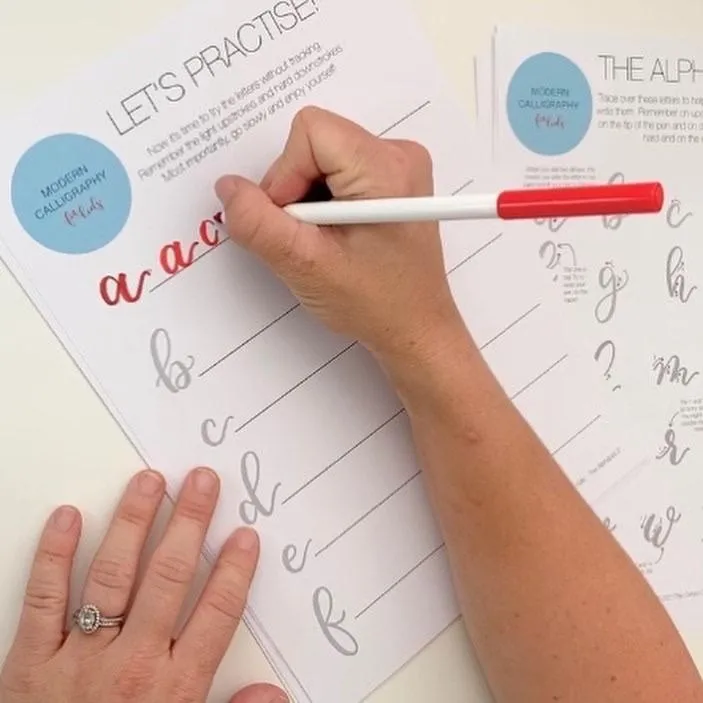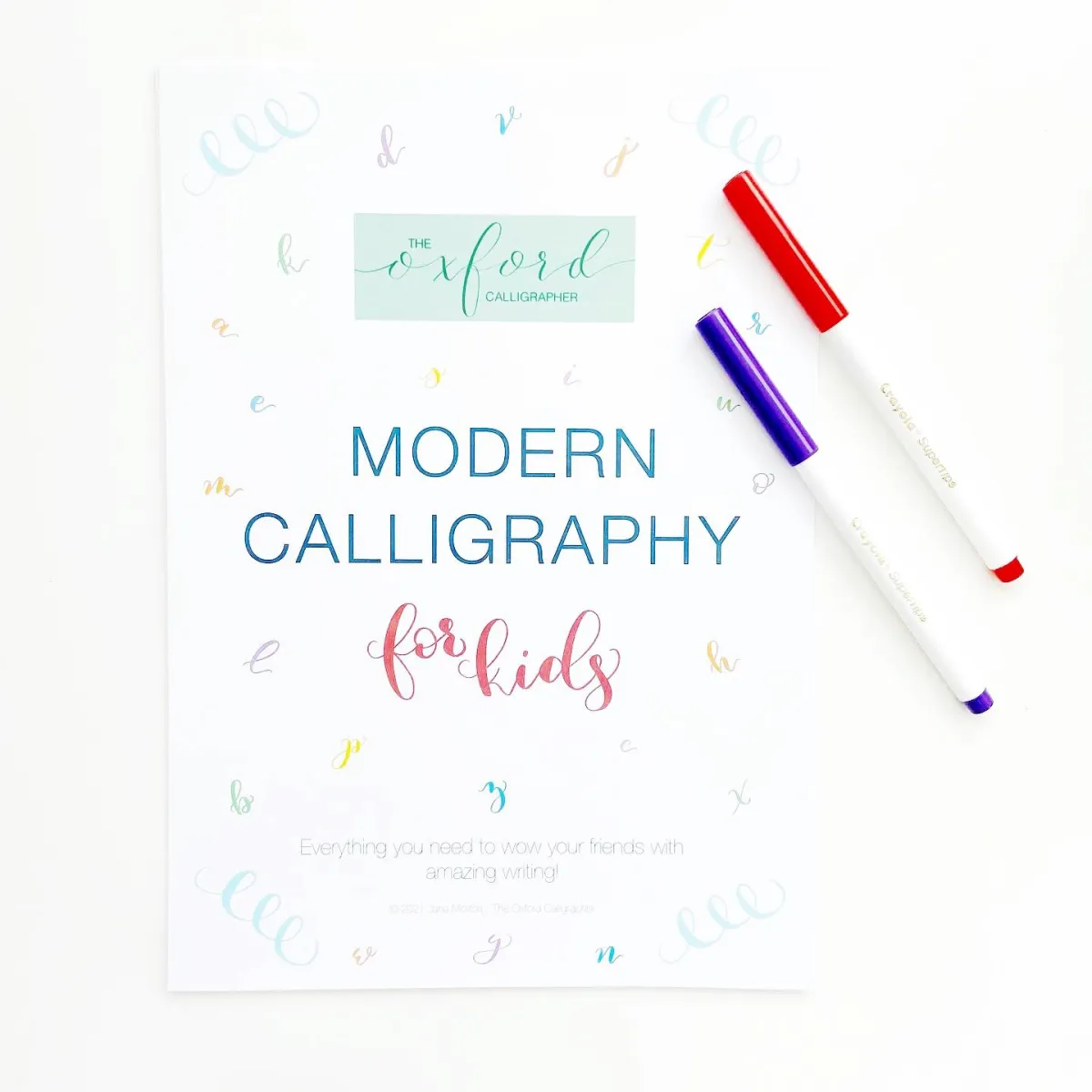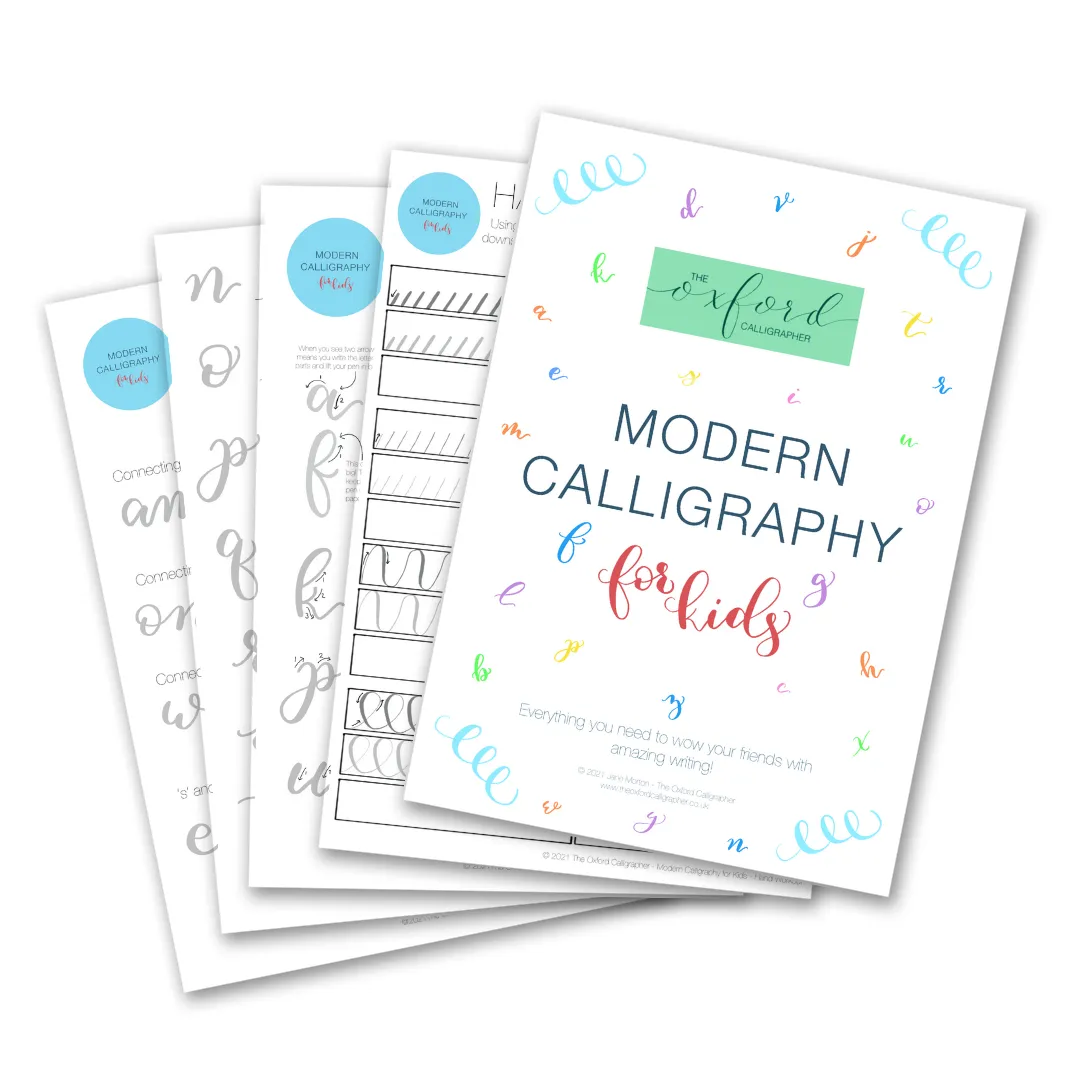The Oxford Calligrapher
Can Calligraphy for Kids Improve Handwriting? Exploring the Benefits...
Introduction - Calligraphy for Kids
In today's digital age, where keyboards often replace pens, the art of handwriting seems to be fading into the background. However, for children, developing good handwriting skills remains a crucial aspect of their education and personal development. In this blog post, we'll explore how introducing calligraphy to kids can significantly enhance their handwriting abilities, making the learning process both enjoyable and rewarding.
With that said, here are 7 reasons why calligraphy for kids can improve handwriting (and foster a love for creativity!)

1. Why Calligraphy for Kids Matters:
At first glance, calligraphy might seem like an advanced art form reserved for adults. However, its benefits extend beyond aesthetics, particularly for children striving to improve their handwriting. By engaging in calligraphy practice, kids can refine their fine motor skills, enhance hand-eye coordination, and develop a greater sense of control over their writing utensils. These foundational skills form the building blocks of neat and legible handwriting.
2. Engaging Young Minds:
One of the key challenges in teaching calligraphy to kids is making it accessible and enjoyable. Fortunately, there are numerous creative ways to introduce calligraphy to children, such as incorporating colourful markers or using playful themes in practice exercises. By transforming calligraphy lessons into interactive and engaging activities, educators and parents can capture children's interest and foster a positive learning environment.
3. The Art of Precision:
Calligraphy isn't just about creating beautiful letterforms—it's also about mastering precision and control. When children practice calligraphy, they learn to pay attention to the shape, size, and spacing of each letter, which directly translates to improved handwriting. By honing their skills in calligraphy, kids develop a keen sense of spatial awareness and a finer appreciation for the subtleties of penmanship.

4. Building Confidence Through Calligraphy:
For many children, struggles with handwriting can lead to feelings of frustration and inadequacy. However, mastering calligraphy can be a transformative experience, boosting children's confidence in their writing abilities. As they see their skills improve and their creations take shape, children gain a sense of pride and accomplishment—a confidence that extends beyond the realm of calligraphy into all aspects of their academic and personal lives.
5. Beyond Pen and Paper:
Incorporating calligraphy into the classroom curriculum offers educators a valuable tool for enhancing handwriting instruction. By integrating calligraphy lessons into language arts or art classes, teachers can provide students with hands-on opportunities to refine their handwriting skills while exploring the artistic elements of calligraphy. Furthermore, parents can support their children's calligraphy journey by setting aside dedicated time for practice at home and offering encouragement along the way.
6. Measuring Progress:
Tracking children's handwriting improvement through calligraphy practice requires patience and consistency. Educators and parents can monitor progress by observing changes in letter formation, spacing, and overall neatness over time. Keeping a journal or portfolio of children's calligraphy work allows for easy comparison and serves as a visual reminder of their growth and accomplishments.
7. Parental Involvement
Parental involvement plays a crucial role in supporting children's calligraphy journey and nurturing their handwriting skills. By actively encouraging and facilitating calligraphy practice at home, parents can create a positive learning environment that fosters creativity and growth. One way parents can support their children is by setting aside dedicated time for calligraphy practice, providing them with the necessary materials, and offering gentle guidance along the way. Additionally, parents can celebrate their children's progress, no matter how small, and acknowledge their efforts to instill a sense of pride and motivation. By being actively involved in their children's calligraphy journey, parents not only promote the development of handwriting skills but also strengthen the bond between parent and child through shared creative experiences.

Conclusion
Niching in your calligraphy business might seem like putting all your eggs in one basket, but it’s really about choosing a basket you can weave better than anyone else. It’s your path to becoming a recognised name, reducing the melee of competition, and actually enjoying what you do because you’re doing what suits you best. By clarifying your brand identity, attracting the right customers, reducing competition, enhancing your expertise, streamlining marketing efforts, and facilitating product and service development, you create a strong foundation for a successful calligraphy business. So, take a moment to consider—what’s your niche going to be? Dive deep, find your passion within your passion, and let’s turn that into your unique selling point. Here’s to finding your niche and making it rich!
Interested in finding your niche and building a thriving calligraphy business?
Work with me
Weddings workshops courses corporate


